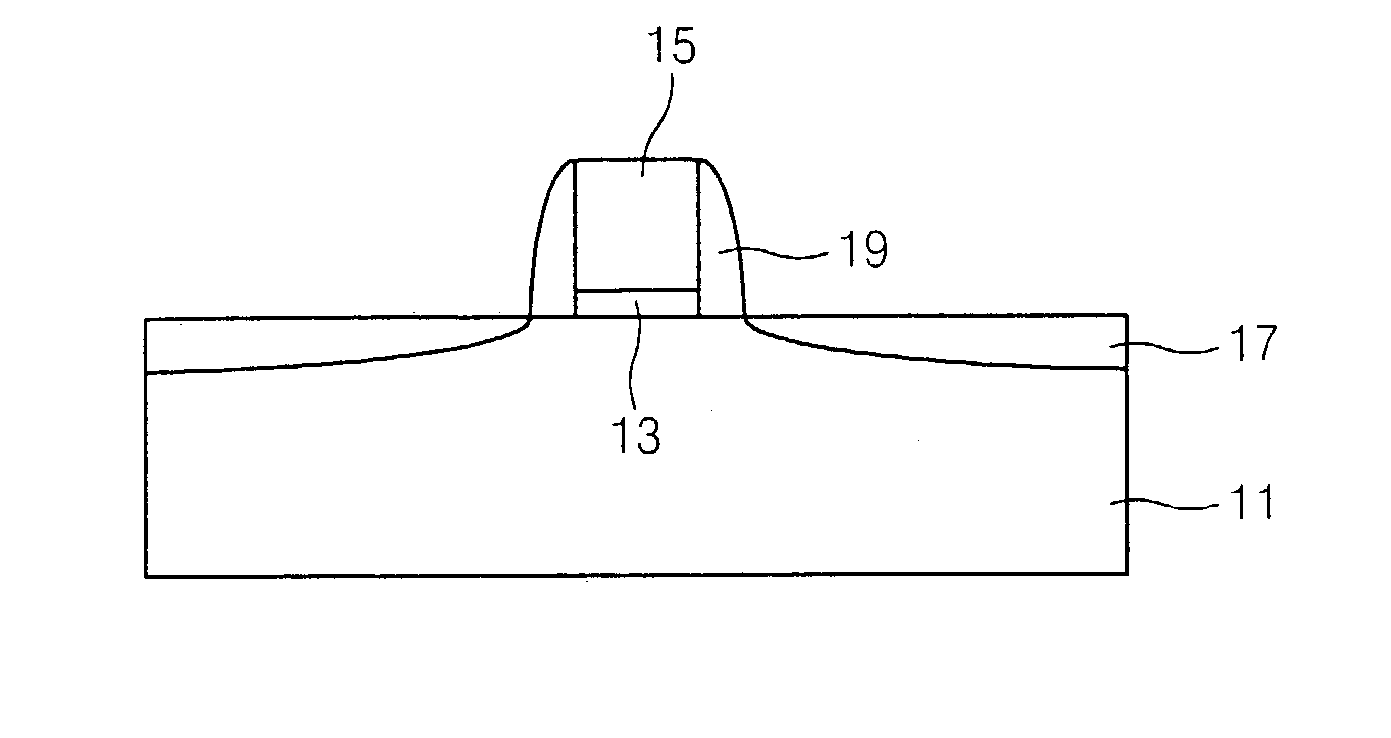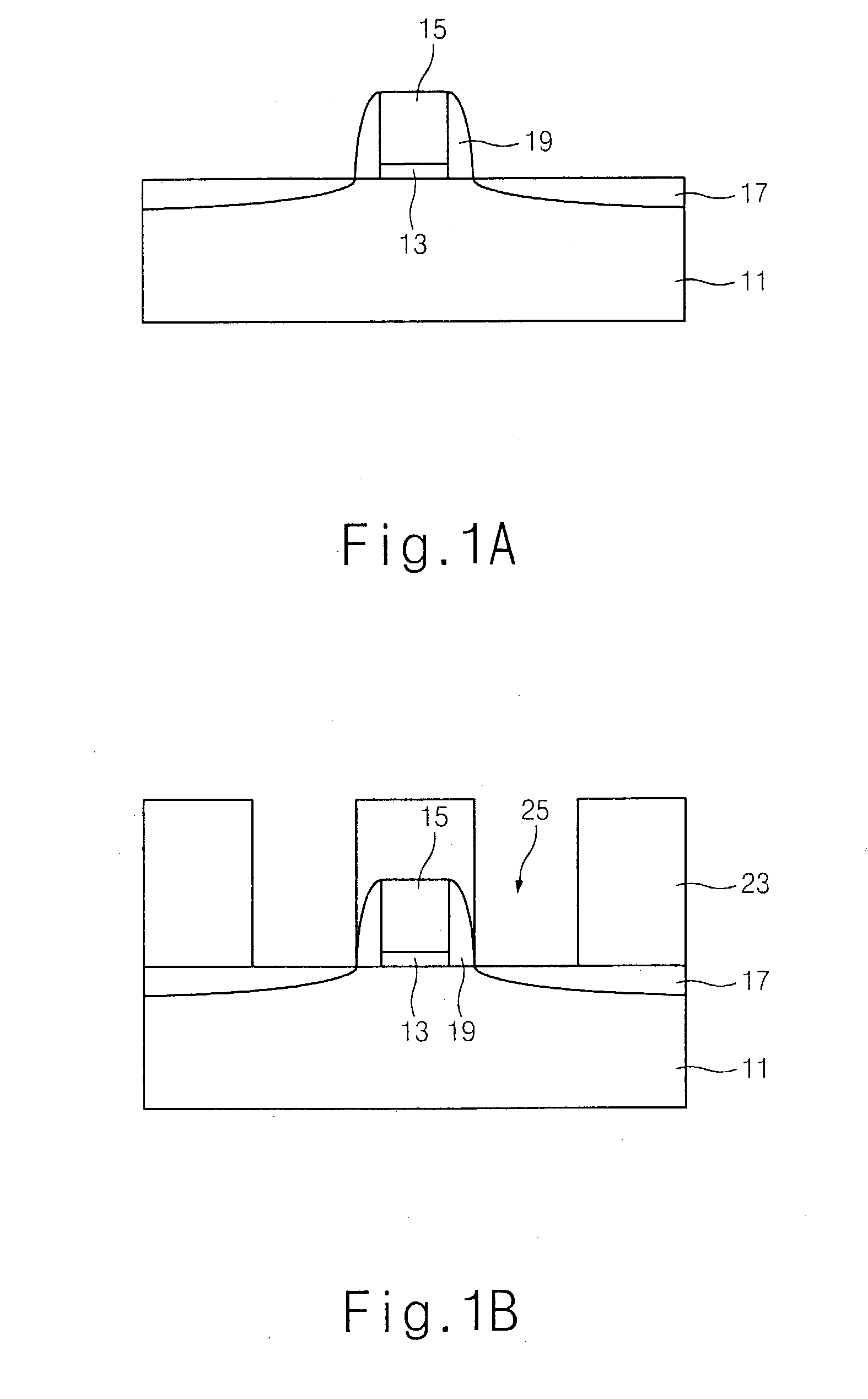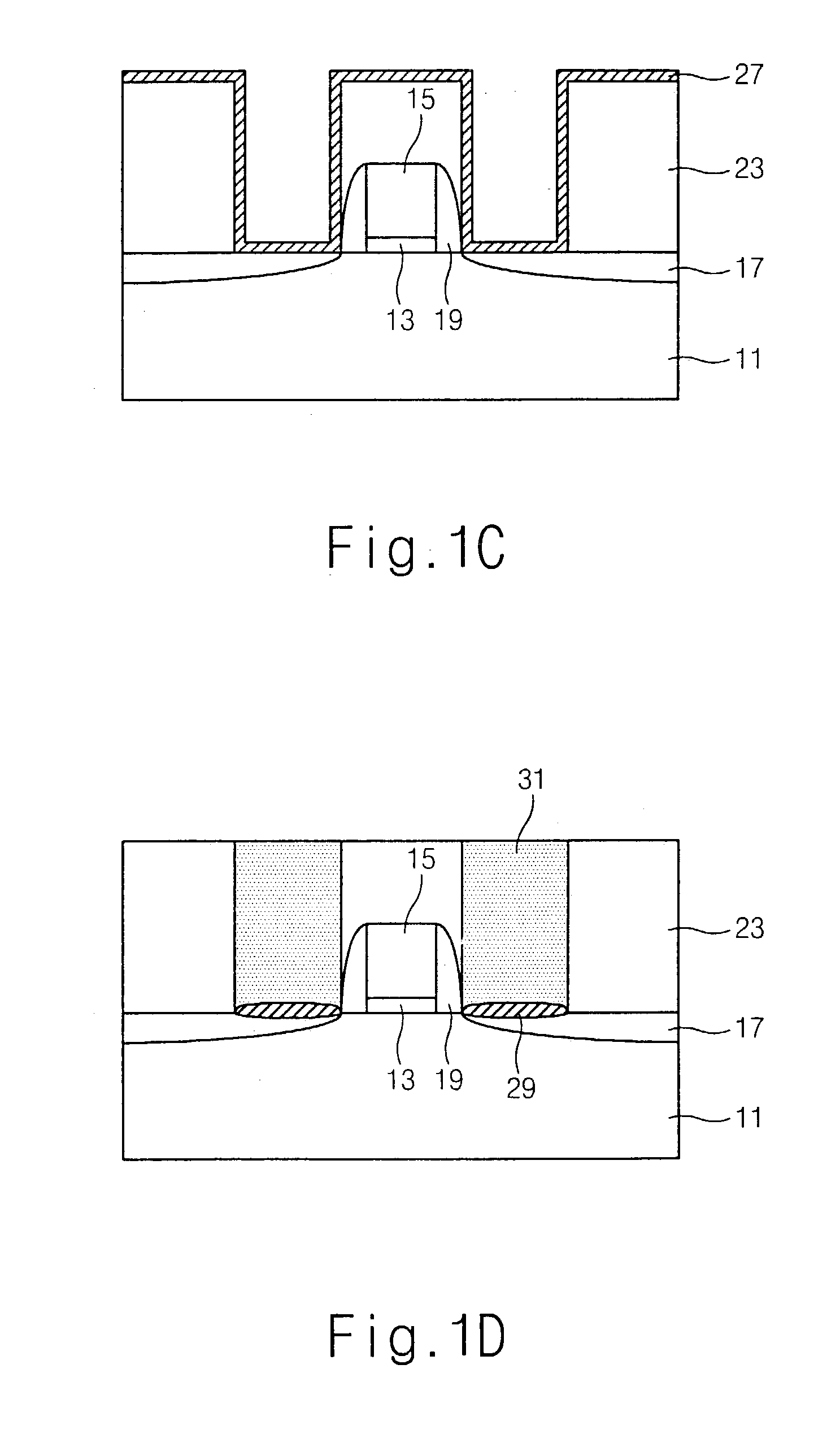Method for forming a silicide layer of semiconductor device
- Summary
- Abstract
- Description
- Claims
- Application Information
AI Technical Summary
Benefits of technology
Problems solved by technology
Method used
Image
Examples
Embodiment Construction
[0020] A method for forming a silicide layer of a semiconductor device in accordance with a preferred embodiment will now be described in detail with reference to the accompanying drawings.
[0021] FIGS. 1a to 1d are views illustrating sequential steps of the method for forming the silicide layer of the semiconductor device in accordance with a preferred embodiment.
[0022] Referring to FIG. 1a, a gate electrode 15 is formed on a semiconductor substrate 11. Here, a gate oxide film 13 is positioned at the interface between the gate electrode 15 and the semiconductor substrate 11.
[0023] An insulating film spacer 19 is formed on the sidewall of the gate electrode 15, and an impurity junction region 17 is formed on the semiconductor substrate 11 using the gate electrode 15 and the insulating film spacer 19 as masks.
[0024] The impurity junction region 17 is an n-type or p-type depending on the type of the transistor, i.e. an NMOS or a PMOS in a CMOS. When the transistor is an n-type, the imp...
PUM
 Login to View More
Login to View More Abstract
Description
Claims
Application Information
 Login to View More
Login to View More - R&D
- Intellectual Property
- Life Sciences
- Materials
- Tech Scout
- Unparalleled Data Quality
- Higher Quality Content
- 60% Fewer Hallucinations
Browse by: Latest US Patents, China's latest patents, Technical Efficacy Thesaurus, Application Domain, Technology Topic, Popular Technical Reports.
© 2025 PatSnap. All rights reserved.Legal|Privacy policy|Modern Slavery Act Transparency Statement|Sitemap|About US| Contact US: help@patsnap.com



